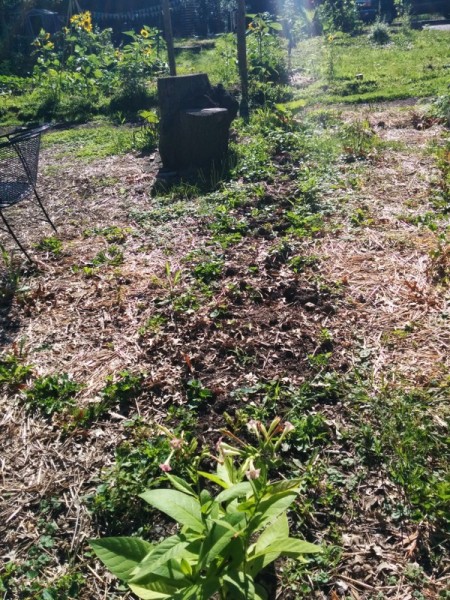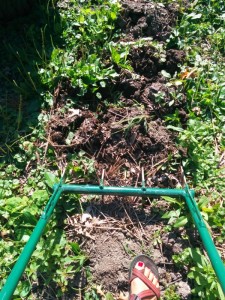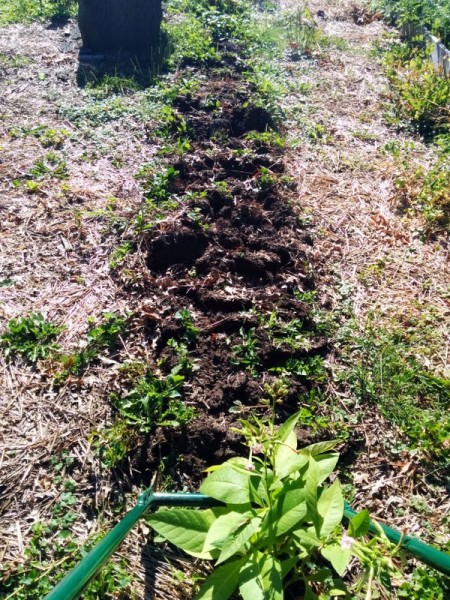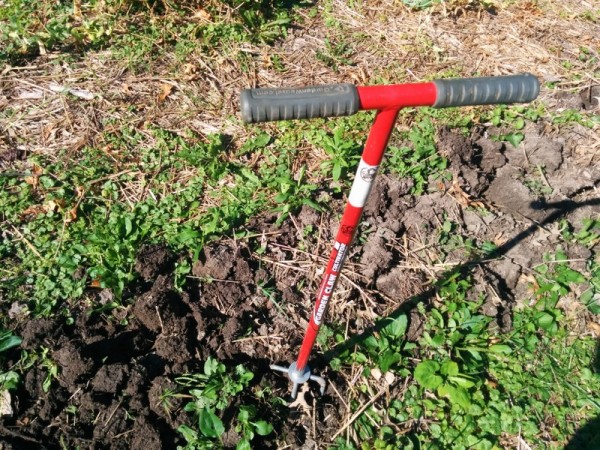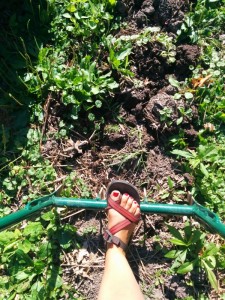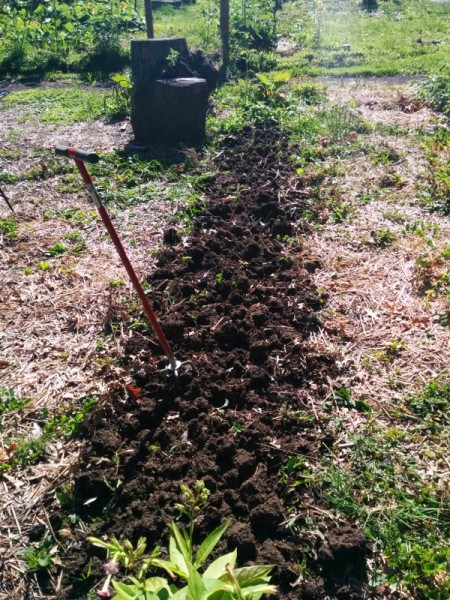You've pulled out your summer crops. Now what? It's time to prepare the beds for a fall crop, cover, or mulch before winter.
I use a broadfork and Garden Claw to gently aerate and cultivate the soil. No-till methods like this are found to enhance the productivity of the soil, and besides, tillers are jerky, smoky, heavy pieces of equipment to wield.
If needed, I start by pulling large weeds by hand. I try to not let beds get too weedy but sometimes it happens, as you can see in the sunny early-morning garlic bed pictured above.
I begin working the soil with a broadfork borrowed from City Folk's Farm Shop. I plunge the tines into the soil and gently press down on the cross bar. Then I rock the broadfork back to lift the soil gently as I pull the broadfork out. I don't turn the soil here, I just use the tines to aerate sections.
Next I quickly rotate a Garden Claw (available for purchase at City Folk's) to the right and left over the surface of the whole bed. The point of the claw is to break up large clods and loosen any smaller weeds. I keep movements gentle here so as to not compact the soil.
Before I plant seeds or transplants, I go back over the bed with a hand cultivator or rake to remove the loosened weed roots and/or smooth the soil into rows. As needed, I add compost and/or organic fertilizer to build the nutrient potential. At all times I maintain the edges of the bed, piling up loose soil back onto the center as needed.
I've seen the results of this no-till, hand-powered method at Swainway Urban Farm, where the naturally raised beds are now so loamy you can plunge your hands in the soil with almost no resistance. I love the quiet, gentle work of using hand tools to re-build my beds between seasons.

